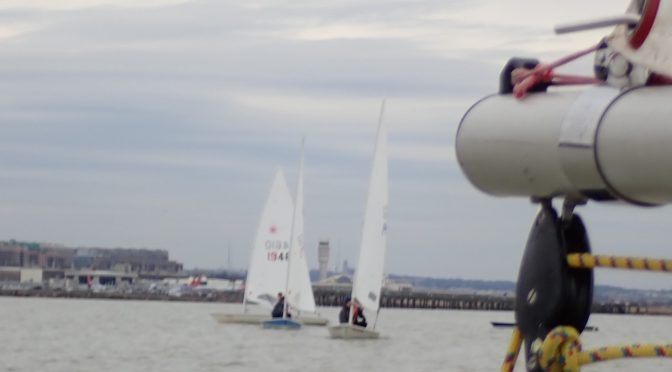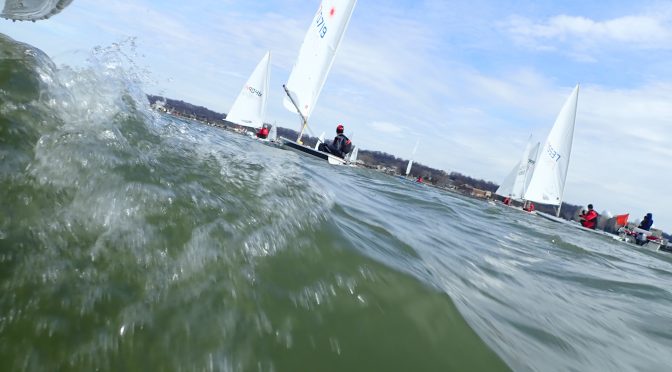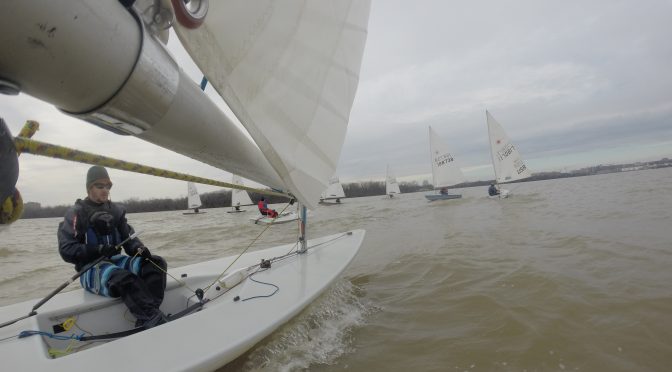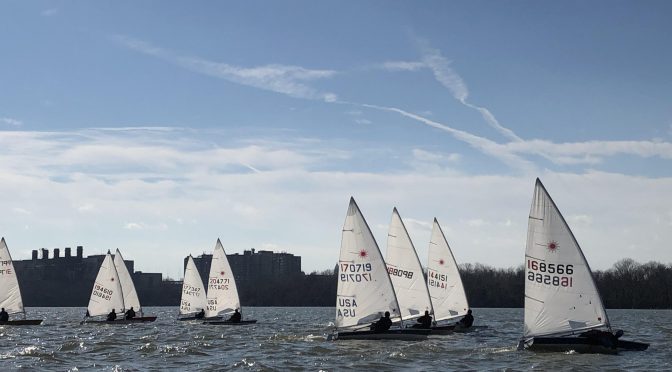With a 2-year old now and another on the way, I haven’t been out for a Sunday frostbite in 2 winters. Sadly, this wasn’t a particular awesome day to come out. Regardless, it was good to get out, splash the boat, and see everyone. I didn’t finish in 3rd, but Farley and Len nominated me to do the write-up.
Here are some thoughts, in not much of an order:
* The wind was light, incredibly light. The river was best (maybe 6 – 8 knots) right when we launched and died throughout the afternoon to 0 (requiring some rocking & paddling to get home). It started south / southwest (power plant) and then moved to south / southwest (wastewater plant) about 1 hour into racing.
* Simply put, what becomes particularly key when conditions are this bad is that the delta between a puff and hole is huge in terms of percentage of boatspeed compared to when there’s a moderate amount of wind (i.e., compare a 7 knot puff vs 5 knot steady breeze to a 3 knot puff vs 1 knot steady breeze). On days like that in situations like ours (with such short races), it’s important to shake yourself free at the start (i.e, have lane or be able to tack), keep your head out of the boat, and to try to situate yourself to catch the next puff as it comes down the river. The boat leading at 2/3 up the windward beat will then likely win the race.
* Of course, keeping the boat moving in the light stuff is really tough. I’m honestly a bit better in breeze (who isn’t) and typically have ingrained that you always have to keep moving in the boat (shift forward, tweak sails constantly, sail the boat flatter / with more heel etc.). However, when it is really light, that strategy doesn’t work, especially downwind. Too much movement just disrupts flow on the sail and the foils. Downwind, it’s important to get situated and not move. Get the sail out past 90 degrees, get the board up, and heel the boat to windward. If nothing else, this at least keeps the main from falling back into center and keeps it ready to catch any puff. I find that leaning out a bit on the boat with both feet in the cockpit can be the most comfortable to remain perfectly still. You can then basically heel the boat over with just your shoulders or head.
* Upwind, lots of tacks (unless you’re particularly great at roll tacks), won’t really help. Frankly, sitting on a header for a short spell (just to keep the boat moving) can pay off vs. trying to catch any 10 degree shift. Today was one of those days where the best move was to pretty much keep the boat pointed upwind at the mark and adjust the sails around the direction of the breeze.
* Len assured me that he hadn’t seen any current flood this year given the high amounts of rain. The RC conveniently had noted that low tide was at 12:30. By the windward mark of the 3rd and final race, it was clear that the current was ripping upriver into DC. When current is that bad, keeping flow and the boat moving is pretty important (tacks just result in you going backwards).
* When the breeze is light and fluky, it’s important to stay awake between races and not drift off too far from the line / starting area. In either the 2nd or 3rd race, only a handful of boats were on the line.
Thanks,
Mike
2018-2019-Laser-Frostbite-Series-12.5




